One of the Joys of Maturity |
|
| Affiliated Advertisers |
Clicking through one of our banner ads or some of our text links and making a purchase will produce a small commission for us from the sale. The Old Guy's Garden Record Friday, March 1, 2013 - Soil Preparation
For those who haven't fully prepared their garden plot in the fall, spring soil testing, adding organic matter, and other amendments such as peat moss or lime will improve ones gardening experience. If you're gardening a new plot, soil testing should give you a good idea of what your soil needs. Home soil test kits
Our raised beds in our main garden are pretty much ready to go, although I'd like to work in some composted manure to raise the soil level a bit in two of the beds. Since we have so much organic matter in the soil of our raised beds, our soil levels go down a bit as the organic material decomposes and the soil compresses. Both our large main raised bed and the newer narrow raised bed could each use a couple of inches of soil or composted manure.
We sometimes get a dry spell in March where our garden plots dry out enough for an early tilling. As to when soil it dry enough to work, another gem from Crockett holds the key, "There's a simple test for soil readiness: if a handful of soil remains in a moist ball after it's squeezed, the soil is still too wet to work; if it crumbles like chocolate cake, it's ready." Also, watching to see when area farmers begin working their soil can be a good indicator. I should note that I find that a lot of farmers work ground that appears to be far wetter than I would have worked when I was farming. Or, maybe their ground is just better drained than ours. Planting Other than peas, we really don't do any direct seeding or transplanting in March. Our last frost date here is around May 1-10, and we still get a lot of really cold weather in March. Our first transplants, broccoli, cabbage, and other hardy brassicas, won't go into the main garden until early April.
If you missed our posting about it last month, Johnny's Selected Seeds has a great, free, online Seed Starting Calculator that is a good guide for when to start and transplant stuff. (You'll need your last frost date to use the calculator.) Once we're able to use our cold frame, we'll begin moving hardier plants under it to harden off and to make room for more plantings under the plant lights. As the weather improves and congestion under the plant lights and cold frame increases, our hardiest plants, such as onions and broccoli, will move from under the cold frame to the edge of the back porch to make room for...more transplants. On those cold, cold nights that are certain to occur every March and April, our kitchen gets filled with flats of transplants and hanging basket plants that won't fit under the cold frame. We sometimes have to throw a blanket over the cold frame on the coldest of nights. Harvest? If we're really lucky, we may begin to harvest a few asparagus shoots towards the end of the month. I picked one small mess of asparagus in the middle of March last year, but that was an unusually mild winter and warm spring.
Saturday, March 2, 2013 - Starting Lettuce
Folks as early as Thomas Jefferson have recommended seeding lettuce every few weeks for a constant supply later. Unfortunately for us, our early planted lettuce is usually the only good, spring lettuce we get. Shortly after our lettuce is ready to pick, our weather usually turns hot and dry, and the lettuce bolts. I faithfully replant another lettuce transplant close to the space where we've harvested from in case cool weather prevails. But while I may start and transplant lettuce more than once in the spring, the first lettuce is usually all we get to harvest. Possibly to compensate for our short harvesting season, I grow a lot of different varieties of lettuce. I don't get into the designer salad leaves, but grow lots of romaine, summer crisp, iceberg, Boston, butterhead and leaf lettuce. While our spring harvest lasts, it's great. And a well kept bed of lettuce can be as pretty and colorful as a flowerbed in bloom.
I start our lettuce in a half flat using half of an #1804 insert, giving us 36 cells to fill. I use sterilized starting mix which I drench with warm water before planting. For the sake of tidiness, I filled the half flat with starting mix downstairs in our plant room before plopping it into the kitchen sink for watering and planting.
You also don't want to use bottom heat, as lettuce germinates well in cool soil. Once I had the seeding all done, I freed one of the connected cells with a paring knife and bottom watered the half flat with warm water. I then let it sit and absorb what it would for an hour before pouring off the excess water, covering the half flat with a clear humidome, and setting the flat on a non-heated shelf of our plant rack to germinate at its own speed. We'll again seed lettuce this summer for a fall crop that finishes under floating row covers. Two years ago, we had fresh lettuce right up to Thanksgiving. The varieties we planted included Barbados and Nevada (summer crisps), Crispino and Sun Devil (icebergs), Nancy and Indiana Amish (butterheads), Winter Density, Defender M10, Colored Romaine Blend, Green Forest, Red Romaine, and Valmaine (all romaine/cos or romaine), Red Lollo (red leaf), Skyphos (Boston softhead), and Baby Star (bibb). Indiana Amish, Green Forest, Red Romanine and Valmaine are all new varieties for us this year. Hanging Basket Petunias
I usually just make up a mix of peat moss and potting soil for our hanging basket plants and older plants we may be transplanting. But the bag of potting soil I was using was one that had sat, half full and open, on the back porch last fall. Wondering what had crawled into it and laid eggs made me cautious enough to sterilize the planting mix in the oven. Two twelve quart loads of potting mix eventually got baked for an hour and a half each at 400o F, considerably slowing down my gardening efforts for the day. The hanging baskets currently have to sit on the floor outside our plant rack, getting just what light that leaks out to them. But transplanting them opened up some space that I'll quickly employ with all the stuff we're seeding now. Gloxinias
As gloxinias break dormancy, they should be repotted into fresh growing medium, or at the very least, have some of the soil around them refreshed. Ours will all eventually get repotted, although it will take a few days to get it all done in between other gardening chores. The gloxinias got a good dose of water and went into a flat along the outside edge of our plant rack where they'll get some light. A Bit of Crow for Lunch
But so far, three of the four germination tests are showing disappointing results, with the other having barely acceptable results. We're not out of the woods yet on this issue. I'll be checking the remaining seed at 2-4 day intervals to see if the germination rates pop up a bit. Plant Rack Overloaded I've mentioned several times recently how overloaded our plant rack becomes at this time of year. Once we can use our cold frame for hardier plants such as broccoli and onions, things will ease just a bit, but not much. As you can see at left, the plant rack is full, and I've placed hanging basket plants and gloxinias on three sides of the rack. Obviously, the plant rack being overloaded is a good kind of problem to have, as we have lots of vegetable and flower transplants growing under lights. I've contemplated modifying the plant rack at time to accommodate the larger perma-nest trays we're making more and more use of, but have finally discarded the idea. The rack is over 30 years old, has been torn down and reassembled multiple times as I've moved from place to place, and did not reassemble gracefully when we moved to the Senior Garden. I think I need to add designing and building a new plant rack to my endless to-do list. Lumber isn't all that expensive, but the light units aren't cheap. And a bigger problem is having enough power to run another plant rack at our peak growing season. We're currently running six, 48" light units plus a soil heating mat on one circuit. I doubt the circuit can handle much more. We do have two newer shop lights that are capable of running the energy efficient T-8 bulbs, although I've never tested how well such bulbs would do as plant lights. A new circuit plus using units with T-8 bulbs could actually lower our electric bill some. Or maybe I just need to grow less stuff. With a strong winter storm coming in this afternoon, I'm more than happy to be staying inside. We're supposed to get just a bit of snow, while folks further north of us may get a half foot or more.
Once the sweet potatoes put out roots and green shoots (slips) as topgrowth, it's surprising how much water they use each day. I've come close to letting ours dry out several times in the past. When the topgrowth is around three to four inches long, I trim it, dip the individual slips in rooting compound, and put them in fourpacks to establish root systems. As long as you start with healthy sweet potatoes from the previous year, it's an easy task. Note that the process made a real mess of the old drinking glasses I used, with green slime growing in them along with a nasty lime buildup that was tough to wash out. Some scrubbing with Spic and Span And after searching and searching, I discovered that I didn't get a good shot of our sweet potatoes growing slips in the kitchen window last spring. There are lots of shots of pretty gloxinias, with some sweet potato leaves sticking out around and behind them as a tribute to my poor image composition. But I do have shots of our 2011 sweet potato slips. They look pretty bad, but once rooted in potting mix and given a bit of time to grow roots, they produced a nice crop. And as I've written here before, growing sweet potatoes is pretty new to us, so almost any gardener probably knows more than I do about the process!
I also checked our last round of geranium seed germination tests yesterday and today. Sadly, there wasn't much difference from the results I wrote about on Saturday. Some of the seed had begun to rot, possibly from my getting too much water into the baggies I use to hold the seed tests. Light striking the seed when I last checked it may have curtailed germination also. But at this point, I'm not comfortable drawing and publishing any further results from this test here. I'm not at all pleased with the initial results of the test, but fear that I screwed it up somehow. Grrr.... Saturday, March 9, 2013 - Cold Frame Season
And of course, using a cold frame really gives one a jump on the growing season. Hanging basket plants that got moved to our cold frame on or a bit after March 6 last year were ready to add some welcome color to our back porch by March 18 (the earliest we've ever been able to do that stuff). We almost certainly will have a few more nights where the low temperature drops into the mid-20s. On those nights, hanging baskets just come into the kitchen and the cold frame gets a quilt over it. Every few years, we may have a really cold night predicted, and if I'm on my toes, everything comes back inside on those nights. Actually far more dangerous than frost to our transplants is forgetting to open the cold frame a bit each morning. On sunny days, heat quickly builds up under the plastic and can easily harm or kill ones transplants!
In the days and weeks ahead as the cold frame fills to overflowing and plants harden off, the hanging baskets will move to hangers around the porch. Flats of hardy plants such as the onions and brassicas will move to the edge of the back porch to make room under the frame for tender transplants such as tomatoes, peppers and melons. Sunday, March 10, 2013 - Planting Peas
I planted four tall pea varieties today, Amish Snap, Champion of England, Mr. Big, and just a few Spanish Skyscraper that a fellow SSE member had sent me. I didn't go end to end in the bed, as I plan to transplant a tomato plant at either end of the bed. I also didn't put in t-posts for our trellis, but will do so in a week or so after the peas have begun to emerge. Getting the first of ones peas planted really early helps produce lots of early sweet peas and allows one to use varieties that don't handle summer heat very well. I'll be planting more peas later on this spring, but the varieties I use for that planting, Eclipse and Encore, don't germinate well in cold soil. The peas planted today will get harvested early in the season with the bed then repurposed for cucumbers on the trellis.
Temperatures didn't get above freezing this morning until after 10:30. While I thought I was prepared for the freeze, I'll need to lay a bit of loose soil along the edge of the cold frame to seal the leak before our next really cold night comes around.
I also got around today to starting several more fourpacks of broccoli and a little cabbage and kohlrabi. Although we have lots of brassicas doing well under the cold frame, they're pretty much timed to be ready for transplanting into our main garden plot in April. I wanted some fresh, 6-8 week old broccoli for when I get around to putting brassicas into our East Garden sometime in May.
Our parsley, shown below surrounded by celery, geraniums, and petunias, transplanted well into fourpacks this week.
And after all the problems we had getting geranium seed to germinate, we ended up with more plants than we'll need this year. From the various seedings, we have geraniums of various sizes now. The Vinca in the flat of geraniums shown at right are another slow go for us this year. All the gloxinias I previously wrote about breaking dormancy nearly at the same time are now all repotted or at least have had a refresh of soil. Since some of these plants are coming out of their third and fourth periods of dormancy, we should have some good, strong blooming plants by early summer.
Oh, yeah. Our peas seeded last weekend are beginning to swell and put out roots. I wouldn't have known, but one of our dogs dug just a bit in the raised bed before the repellent I had good intentions about starting our tomatoes and peppers today, but one doesn't often get such a gorgeous day in March as we had today. Partly cloudy skies and a high temperature in the upper 50s quickly made me decide some outdoor chores were more important than starting transplants. I also realized that I still had some pruning to do on our fruit trees that was a bit overdue. Pruning our Granny Smith and Stayman Winesap apple trees only took a few minutes, as I'd kept the Granny Smith well pruned since its brush with fire blight that killed our standard Stayman Winesap apple tree. Our replacement dwarf Stayman Winesap just went in last spring, so there wasn't much pruning to be done there, either.
Tomorrow, all the fruit trees will be sprayed with dormant oil Saturday, March 16, 2013 - Dormant Oil on Apple Trees
By the time I had the info I needed, the wind had picked up, and I backed off spraying. Just after noon, the wind died down a bit, so I got out our sprayer, cleaned it, and filled it with a 3%ish dormant oil solution. Of course, by the time I got outside, the wind had picked back up, but I went ahead and sprayed the trees (and a lot of the environment downwind of the trees). I ended up not using any fire blight spray, as I couldn't find our bottle of it. A quick visit to our local garden store revealed that they didn't have any, either, but put some on order for me. Since I was there, I picked up a bag of dog and critter repellent and another bag of potting soil. I would have bought a bale of peat moss as well, but they wanted $17 for a 2.2 cubic foot bale! We use a lot of peat moss when we transplant our melons, so I'm going to have to hunt an affordable source for the stuff. (It appears Rural King has 3.8 cubic foot bales for $12 each.) Tomatoes - Adding Another Heirloom...maybe I was going to wait another day before starting our tomatoes and peppers, but after reading what little information I could find online about the Earlirouge variety, I got excited about trying to grow out our old saved seed. Earlirouge is a sister variety to the Moira and Quinte varieties from which we already grow and save seed. All three were developed by Jack Metcalf at the Agriculture Canada Smithfield Experimental Farm, in Trenton, Ottawa, in the 1970s. The Moira variety has long been one of our favorite tomatoes for its excellent flavor, deep red interiors, near ideal size for slicing or canning, and healthy growth habit. We were able to obtain the Quinte variety from a seed start provided by the USDA Agricultural Research Service's Germplasm Resources Information Network last year. We'd grown and saved seed from Quintes in the 70s and 80s, but lost our seed start somewhere along the line. Quintes are similar to Moiras, although not quite as flavorful, but have an extremely thin skin which is said to be good for canning.
I went ahead and started the rest of our tomatoes for this year, as we just barely had room for them in a seed flat over our soil heating mat. As our family is grown and mostly moved out of state, I've cut back our tomato starts for this year. We had more tomatoes than we could eat, can, or give away last year. Our current garden plan calls for just four Moiras, two Quintes, two Earlirouges (if we get really lucky with germination), one Bella Rosa, and one grape tomato plant, a Red Candy. Only the Bella Rosa and Red Candy are hybrids, as we try to move to as many open pollinated varieties as possible. I am a little concerned with growing so many related varieties, as they could all be susceptible to similar plant diseases or failure to adverse growing conditions. And I may still have to find room in our garden plan for some old favorites such as Wonder Boy or Better Boy. Once I had everything seeded, the fourpacks and pot went into a covered flat over our soil heating mat. It's thermostat is set at 75o F, just about ideal for tomatoes and the vinca that are sharing space in the flat. (Note: The 77.1o F reading shown at left is due to the warm water I used in moistening the soil for the tomato seed.) Over the years we've lost a few varieties of saved seeds for various reasons, mostly from not growing them out often enough. Our most recent loss was our strain of Moon & Stars watermelon. It had apparently crossed with another variety, but produced giant Moon & Stars marked melons that had great flavor but way too many seeds. While we grew it out and saved seed from it regularly, our seed went bad one year, and we lost the strain. We've also been fortunate to germinate some very old seed at times. Just a few years ago, we got about 10% germination from some commercial Moira tomato seed we'd had in frozen storage since 1987! And after having our saved seed go bad in storage, we had one, just one, Japanese Long Pickling seed out of 25 in an old (1994) commercial packet germinate, saving the strain for us. This year we will be growing out, saving seed, and hopefully, offering seed the following year via the SSE annual yearbook: Moira, Quinte, and Earlirouge tomatoes; Earliest Red Sweet peppers; Japanese Long Pickling cucumbers; Eclipse peas; and possibly Mohon's greasy pole beans (Dennis Mohon thinks they may be Tennessee Cornfield beans.). Most of these varieties simply aren't available commercially in the United States anymore. Canadian gardeners should be able to find the Metcalf tomato cultivars fairly easily, as there are several organizations and seed houses in Canada working to preserve them. Since I really am rambling tonight, let me add an interesting descriptor of the Moira tomato variety and its ancestry from the Long Island Seed Project:
I find it intriguing to see where some of our current varieties came from. Were I a younger man choosing a career, plant breeding would seem an exciting option. I hope to get our peppers started tomorrow or early next week, without any long winded seed saving explanations. I didn't plant anything new today, but did move some impatiens from their starting pots to fourpacks. But the big deal of the day came when my wife and I took our granddaughter back home to Terre Haute and stopped by the Rural King there. It turns out that 3.8 cubic foot bales of peat moss are on sale at Rural King this week for $10.99! We use lots of peat moss to mix with potting soil to make our seed starting mix. We use even more peat moss in the holes/hills we plant our melons in. Without the peat, I don't think we could grow good melons on our ground. Full disclosure: Nope, Rural King isn't a Senior Gardening affiliated advertiser, but the peat moss deal is too good not to pass along to readers. Monday, March 18, 2013 - Lots of Rain - Freeze Warnings
We're also looking at rather worrisome weather forecasts that include overnight lows midweek in the low 20s. That's more than our cold frame can handle, so we'll have flats and hanging basket plants lining the kitchen walls a few nights this week. Although a hassle, bringing in our transplants for a night or two is something that we usually have to do once or twice each year. Starting Bell Peppers I evicted some slow germinating vinca from their spot in a flat over our soil heating mat today to make room for our bell pepper starts. If I waited any longer to start our peppers, they'd be rather small at transplanting time.
When transplanting time rolls around, I'll have to make some choices. Four Earliest Red Sweets will go into the East Garden for isolation and seed production. Two each of Red Knight and Ace will go in our main raised bed, leaving just two or three slots for the chocolate and yellows. While I'd like to grow some of everything that comes up, we usually have all the peppers we can use and give away with 10-12 plants each year. Last year, we had nine pepper plants, and once the drought broke, we were overrun with peppers. I'd still like to start some paprika peppers for this year's garden, but simply don't have a spot for them in our garden plan as yet. We are going to turn some new ground to isolate some tomatoes, so maybe I can squeeze in some Feher Ozon, Alma, and Paprika Supreme plants in that area.
Wednesday, March 20, 2013 - First Day of Spring...Brrr It may officially be the first day of spring, but it's relatively cold outside today and will be getting colder tonight! The temperature has struggled all day just to reach freezing and is now predicted to drop to 19-20o overnight, well below normal temperatures for this time of year. Our flats of onions and pots of petunias brought in yesterday from the cold frame won't even get to go outside today. Of course, our cold weather is a relative thing. Folks in New England are digging out after receiving up to 15 inches of snow on the first day of spring! Even so, an aging gardener hoping to be getting outside has to hunt for little victories on a day like today, other than the Lord granting us another day. Ours came with several tomato varieties germinating just four days after seeding.
I frequently begin to get a Dr. Zhivago complex in the winter (or the first day of spring), desperately wanting to just see something really green. A trip to our basement plant rack is often therapeutic, as there are usually lots of colors, green and beyond, on display there. Our trays containing celery, geraniums, parsley, and a few petunias provided my necessary shot of green for today. Also, receiving a small seed order of some basil, dill, kale, and another lettuce variety just four days after placing the order with Annie's Heirloom Seeds gave me some more seed to play with. Saturday, March 23, 2013 - Crazy Spring Weather Our "spring" weather here is becoming almost comical. It got up to 61o F today, so I got out and trimmed bushes and hedges, actually working up a sweat. But tonight, tomorrow, and Monday, we have a forecast that includes snow...possibly lots of it. The current Winter Storm Watch states:
Oh, my.
Our current forecast includes lows in the mid-20s through the middle of next week, so I'll need to continue bringing in our plants for several more days. That's beginning to impact our seeding plans, as our plant rack is full, and I have nowhere to go with seedlings ready to be moved outside and be hardened off. Got One!
Our first planting of brassicas continue to slowly recover from the freeze damage they suffered a week or so ago. I had to reseed some of the cauliflower, as several of those plants were actually killed by the freeze. That flat remains under our plant lights in the basement, possibly setting back our usual early April transplanting of the first of our broccoli, cabbage, and cauliflower. While I may get some herbs, dusty miller, alyssum, snapdragons, and/or marigolds started in the next week or so, our next major planting will be our melons and cukes. We usually seed our melons to four inch square pots to avoid any transplanting shock from having to uppot plants started in fourpacks, which they quickly outgrow. The downside of using four inch pots is that they take a lot of space and use a large amout of expensive planting medium. The upside is that one can seed a whole "hill," two or three plants, per pot. And, we get little to no transplanting shock when we transplant melons in four inch pots into the field. So, we're sorta waiting on the weather to even out so that we can move stuff from the plant rack to the cold frame. Once space opens up on the plant rack, we can seed our cucumbers, muskmelons, watermelons, and squash.
While things are going to be a mess until the snow melts, it sure is pretty.
The overnight snow, while not nearly as much here as was predicted, has us marking time again. Our kitchen and dining room have plants in them that normally would be under the cold frame at this time of year. Likewise, our downstairs plant rack is full to overflowing. So...we'll just have to be patient and wait for the weather to cooperate so that we can plant some more stuff.
Our half flat of lettuce started on March 2 is already to the point of needing more space. I started the seed in rather small fourpacks, knowing that I'd have to uppot the seedlings to larger fourpacks or pots later. Of course, when I seeded the lettuce, I was hoping we'd have lots of free space under our cold frame for onions, broccoli, and the lettuce. Sadly, the cold frame has 4-6 inches of snow on it, and we still have three or four fairly cold nights ahead of us that will keep the cold frame inactive until the end of the week at best.
Potting the stem actually produced two cuttings, but one quickly failed. The other has produced a clone of the original geranium, although a good deal healthier and better looking. Looking towards our other kitchen window shows a potted sage plant, an egg carton of petunias, and a potted parsley plant. Just outside the window are some of the bushes I was trimming in warm (62o) weather on Saturday. Our mail came early today while I was out swapping seed into and out of our big freezer. There wasn't much mail, but the April/May (2013) issue of Mother Earth News was there. This month's cover story is Cheryl Long's excellent How to Make Cheap Garden Beds. Long doesn't necessarily favor raised beds, and in fact, actually has some good reasons where one would not want to use them. But she gives a lot of practical advice on how to start garden beds with walkways between them that most anyone can do and afford. In the past, I've used several techniques similar to what she describes and found they worked well. If you're just starting gardening or planning on turning new ground, this article could prove to be gold for you. No, I'm not ready to tear out our raised garden beds. Our first raised bed started out as some essential terracing to prevent soil erosion. Having two sides of the bed enclosed for the terrace, I later added the other two sides to make an enormous (16' x 24') raised bed, something I really don't recommend. But it worked for our peculiar and particular situation. The seed going out to the big freezer today included brassicas and lettuce that we won't need again until we start our fall garden transplants. Seed that we're done starting for the year, tomatoes and onions, went back into the big freezer. I brought our melon and cucumber seed in from the big freezer, as we need to get that stuff started just as soon as we can clear some growing space under our plant lights. Outside, things are a good deal more pleasant than they've been over the last few days. It was still snowing a bit when Annie and I went to bed last night. By this morning, it sounded like it was raining outside from all the snow melting off the roof. Things will be pretty messy outside for several days, but it appears winter has had its last hurrah for this year and we're on our way into real spring weather. We still have a bit of snow lingering on the ground here and there, but things have warmed up enough to begin putting plants back under our cold frame.
Light Frost? Hard Frost? I often use the terms "light frost" and "hard frost" on this site, but sometimes am a little iffy in defining them. I ran across a page online that does a good job of describing the temperature ranges involved and which plants can stand what temperatures. Frost Tolerance of Vegetables on Botanical Interests describes a light frost as being in the 28-32o F temperature range, while a hard frost being below 28o F. The page also categorizes a number of vegetables by their frost hardiness. I found it interesting that they list most brassicas such as broccoli, cabbage, and brussels sprouts as able to withstand a hard frost, but put cauliflower, also a brassica, in the light frost only category. That listing exactly mirrors our experience a couple of weeks ago with our cauliflower under the cold frame sustaining serious frost damage, while other brassicas in the same flat not being damaged as seriously or at all. Botanical Interests also sells flower and vegetable seeds and has an excellent rating on Dave's Garden Watchdog. As I shut down my computer late last night (actually early this morning), the desktop background photo changed to the one below. I took the shot while working on our original Gloxinias feature story, and it's always a reminder of why I grow gloxinias. They're absolutely gorgeous. The image is available for others to use in a similar fashion from our Desktop Photos page on mathdittos2.com. The version I use shown above is a pretty close crop of the image offered on Desktop Photos. Also please note our standard and somewhat tongue-in-cheek disclaimer that all photos on this site are copyrighted, but may be used for desktop photos or classroom use without permission or payment. All other use requires prior consent, massive royalty payments, your left pinkie finger... (Actually, I'm a pretty soft touch on non-commercial use of my photos. Just , please.) If you're into gloxinia shots, there are several more on our Saving Gloxinia Seed and Gloxinia Photos feature stories. Friday, March 29, 2013 - Starting Melons I kept looking at the calendar this week, counting ahead six weeks. Each time I did so, it came up that it was time for me to get our melon transplants started. We like to have them around 4-6 weeks old when transplanted into the field. With melon transplants, younger is usually better than older, as all sorts of things can go wrong when the plants get large.
The trays and pots get washed in dish detergent with a little bleach added. The bleach helps zap any bacteria hiding in planting material I didn't get completely washed off. Usually, I shallowly plant three seeds per pot to make sure I get at least one and preferably two good starts per pot. With older seed, I may use four or five seeds per pot and thin back to two plants if necessary. Because the pots are large, more than one plant can thrive in them until transplanting time, when the entire contents of the pot, unseparated, goes into a hill in our East Garden.
The covered flats go onto soil heating mats, as melons, cukes, and squash all seem to germinate better with a bit of bottom heat. Seedless or triploid watermelon need really warm temperatures for optimal germination. I set the thermostat for our main soil heating mat at 85o F to accommodate the needs of the triploids. And even that figure is about 5o less than a seed house plant specialist told me they use to germinate seedless watermelon. Our backup heating mat, the one with the wire base, is in an extra upstairs bedroom (and on a different electrical circuit). It doesn't have an external thermostat on it as our main heat mat does. When I checked the soil temperature of the upstairs unit this evening, it read 88o F, just a bit warmer than I would like. Overheating was part of the reason I invested in an external thermostat and also retired, other than for occasional use, the backup heating mat. I started a total of twenty pots of melons yesterday and today. Even with that many, I'm about four plants short for the space I've allotted to melons in our East Garden. But twenty pots is all I have room for over our two soil heating mats, so I'll need to start a few more melons when this batch germinates. I also have cucumbers, squash, and eggplant that will need to be started over the soil heating mats. Our muskmelon/cantaloupe planting today included favorites Athena, Roadside Hybrid, Sarah's Choice, and Sugar Cube. New to us this year are Avatar, Charentais, and Pride of Wisconsin. I also started the same three varieties of honeydew we grew last year: Boule D'or, Passport, and Tam Dew. Our watermelon planting included Ali Baba, Crimson Sweet, Farmers Wonderful, Kleckley Sweet, Moon & Stars, Picnic, and Trillion. These are all varieties we've previously grown and liked. Farmers Wonderful and Trillion are seedless (triploid) melons and obviously, hybrids. The rest are all open pollinated varieties. Warming Up
Our cold frame is now getting full, as it only holds five or six standard flats. I brought our flat of dianthus upstairs to go under the cold frame today and had to move a flat of onions to the back porch to make room for the flowers. Our dianthus are all from seed saved in previous years from the Carpet Series. While dianthus are sometimes listed as annuals, they really are biennials that for us have acted like true perennials! I have noticed that with saved seed, the plants tend towards being almost all red blooms, so I may need to spend a few bucks next year to refresh the colors in our flowerbeds. Saturday, March 30, 2013 - Restarting Onions Onions usually aren't one of our transplants or crops with which we have much trouble. But our two flats of onions caught quite a shock from the hard freeze a few weeks ago when they were under the cold frame. During our recent series of cold nights, I set the onion flats on the back porch during the warmth of the day, bringing them back inside overnight. One flat of onions rebounded well, but the other has whitened, withered, and over half of the onion starts have died. Then I remembered that one of our pets had gotten into the onions on the porch, digging in them a bit. It would appear the pet, probably one of our cats, did more than dig! I'm guessing that the dying onions got peed on and burnt from the nitrogen in the cat's urine. So today, while the onions once more resided on the porch, I put some lime and pet deterrent on the injured flat, but have little hope of saving much there.
To make matters more interesting, the new flat got seeded on the dining room table while my wife supervised Easter egg making in the kitchen. This last flat of onions will be very late in being ready for spring planting. But it also contains the varieties we most value, so starting over is just one of those things that happen sometimes. And maybe what's left in the original flat will recover enough to be used when I put in our onions and carrots. Turn the Auto-Focus Back On
When I later took the original set of shots of the grandkids making Easter eggs and of the new flat of onions, they were all out of focus. I had, of course, forgotten to turn the auto-focus back on. So I went back and retook the shots, having the grandkids pose for the Easter egg shot, rather than the cute, but quite blurred, candid shot I'd gotten of them earlier.
BTW: My XSi looks a bit ungainly, as I quickly ditched Canon's 18-55mm "kit" lens in favor of their 17-85mm lens Sunday, March 31, 2013 - A Little Housekeeping
Note: I don't know if they still make them as well today as in the past, but that's my 40 year-old Weston darkroom thermometer Melons! I seeded trays of melons on Friday and Saturday, and both trays have pots showing germination. The tray seeded yesterday has melons just breaking the soil surface. The tray seeded on Friday had four pots that needed to be moved off the soil heating mat and into a regular tray without a humidome where they'll catch more light and better air circulation. Moving four pots out of the tray over the soil heating mat opened up space there for pots of Moon & Stars, Farmers Wonderful, and Crimson Sweet watermelon, along with a pot of Avatar cantaloupe, a new one we're trying this year. March Precipitation
The folks who do the U.S. Seasonal Drought Outlook for the National Weather Service Climate Prediction Center still show our area as being in pretty good shape for the early part of the coming gardening season. Sadly, the outlook for much of the west, southwest, and parts of Florida shows little improvement in their continuing drought. It did rain just a little bit overnight, which was encouraging. Odds 'n' Ends
Lots of our other starts needed to be thinned by snipping off extra plants. I also transplanted some crowded fourpacks, often splitting one with eight or nine seedlings into two fourpacks with a seedling per cell. Our second planting of brassicas, mainly intended for our East Garden, and our tomatoes all appear quite healthy so far. Even our slow growing vincas are now beginning to look like real plants, putting on their first true leaves.
Sadly, we've never had much luck with purchased sweet potato slips or plants. They arrive in the mail terribly dried out, with half of them dead. They also seem to always arrive at the wrong time, either way too early to put out or way too late. So, we just go with what we have. The sweet potato at right is a Nancy Hall, a whitish variety we got our start of from R.H. Shumway. We like the Nancy Halls better than some of the more popular varieties available, so doing our own starts really isn't all that much trouble. And once the plant really begins putting out green shoots and leaves, they're really quite pretty.
We've survived one serious freeze with some damage to plants under the cold frame. That's made me a good bit more cautious about putting stuff under the cold frame, and also has me checking the frame's seal to the ground each night. We now have the bulk of our transplants started for this year, although there are lots of flowers yet to be started. As space opens up over our heat mats, I still need to get cucumbers, eggplant, and butternut and yellow squash started there. And, we didn't have any of those March dry spells that allow the soil to dry out enough to do some early tilling. That's a good news - bad news deal. We need all the moisture we can get, but I would have liked to have started working up our large East Garden plot. It's picked up a lot of weed growth over the winter, no doubt from seed in all the grass clippings mulch we use in that area. So on this Easter Day, let me wish you good gardening and glory in that "He is risen!" From Steve, the at Senior Gardening |
||||||||||||||||||||||||||||||||||||||||||||||||||||||||||||
| Affiliated Advertisers |
©2013 Senior-Gardening.com

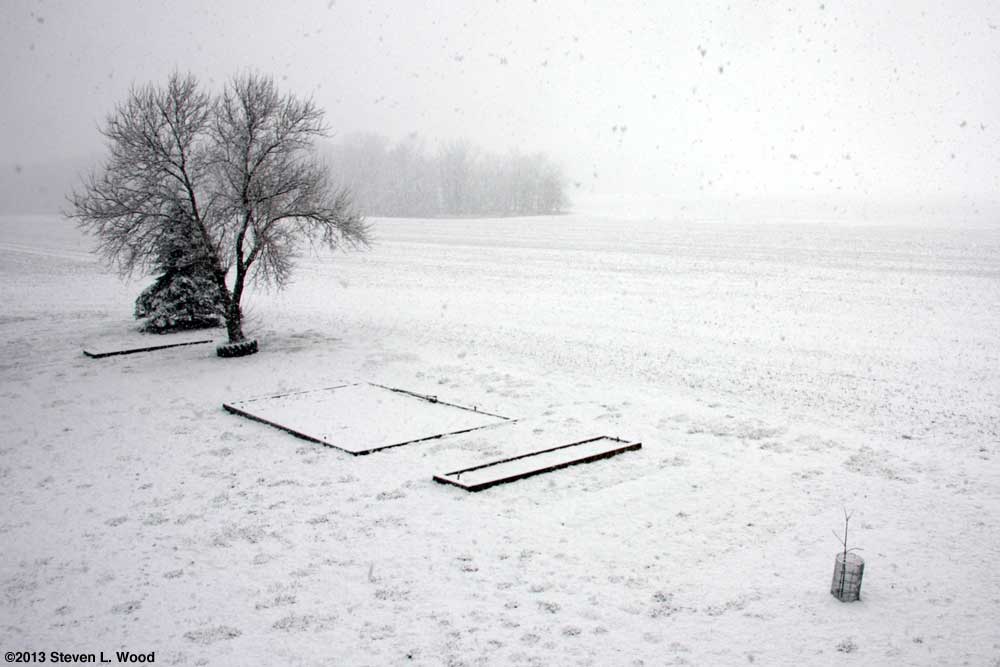






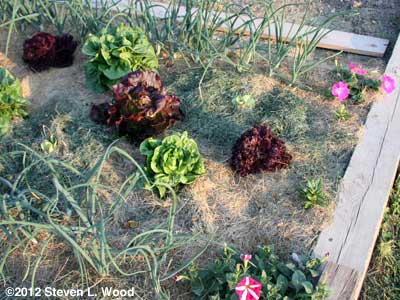
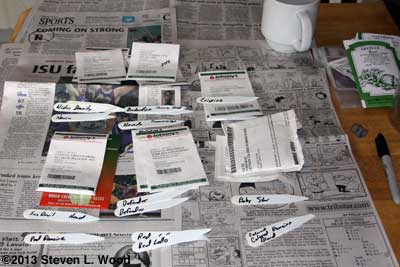
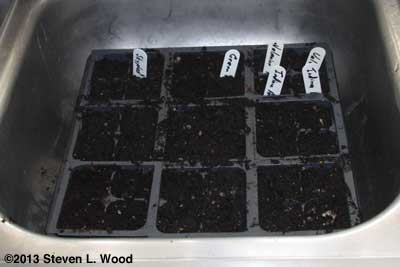




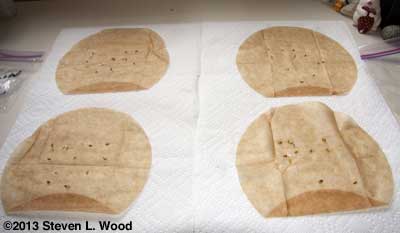
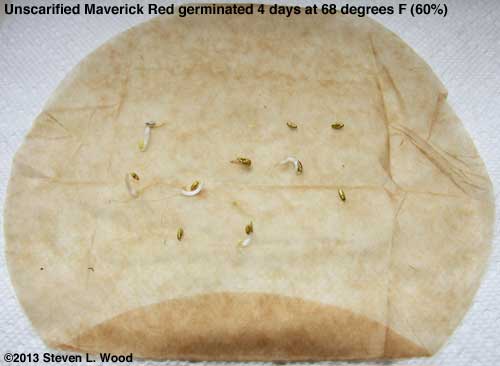
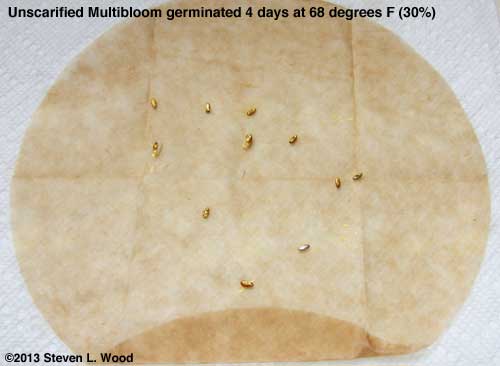
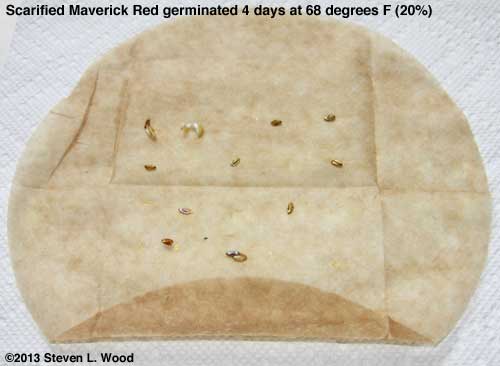
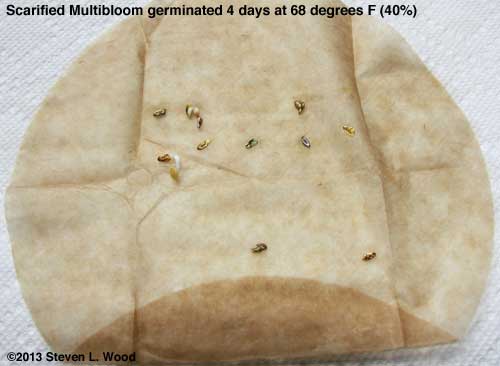

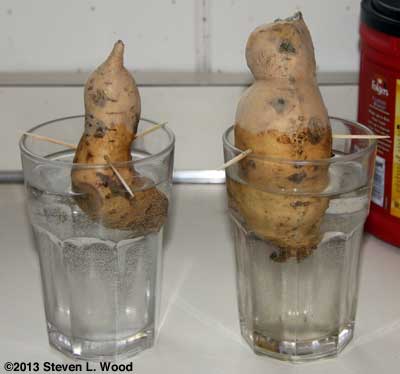

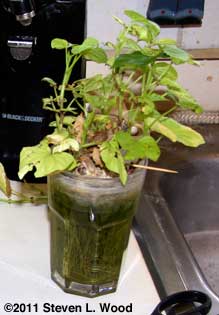








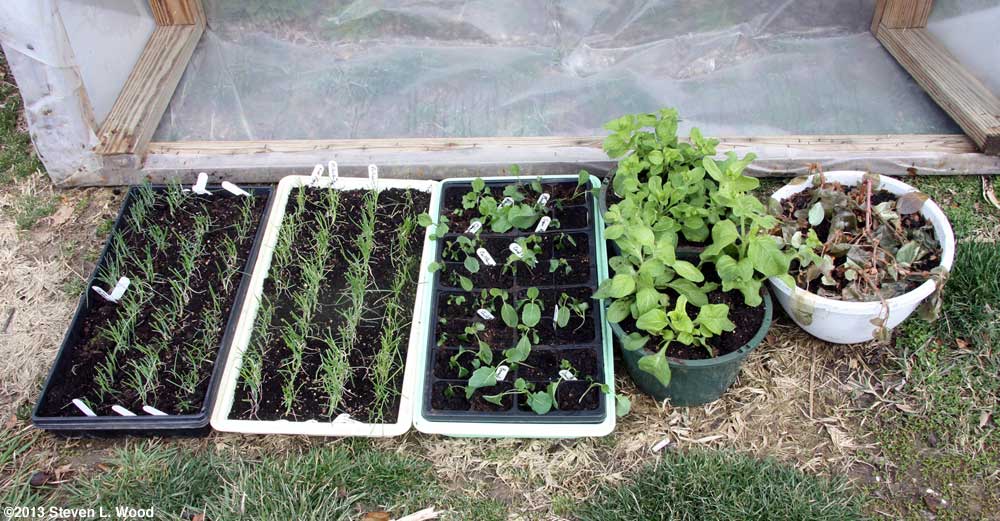

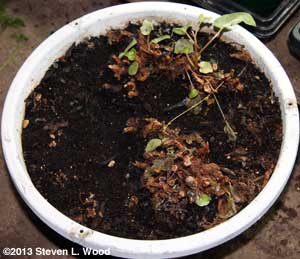
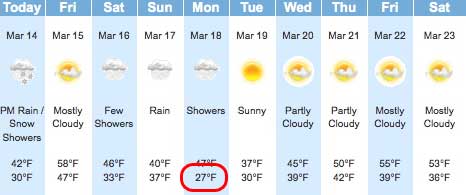





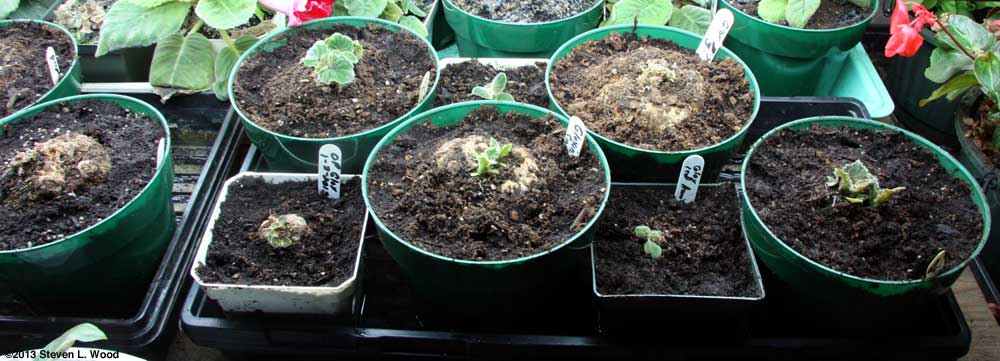






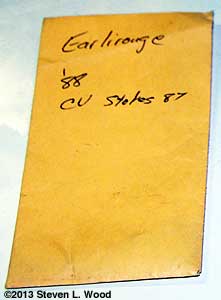







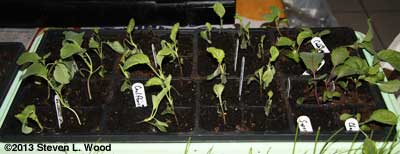






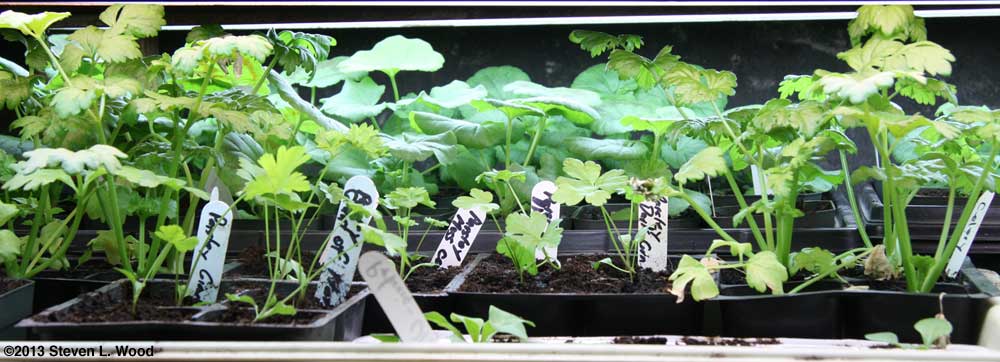
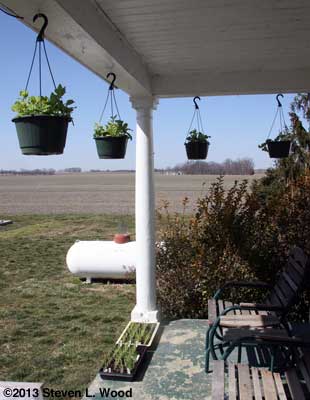

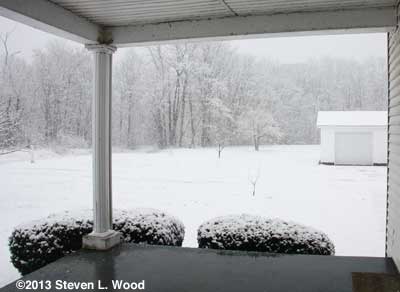


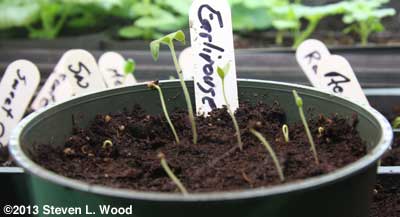



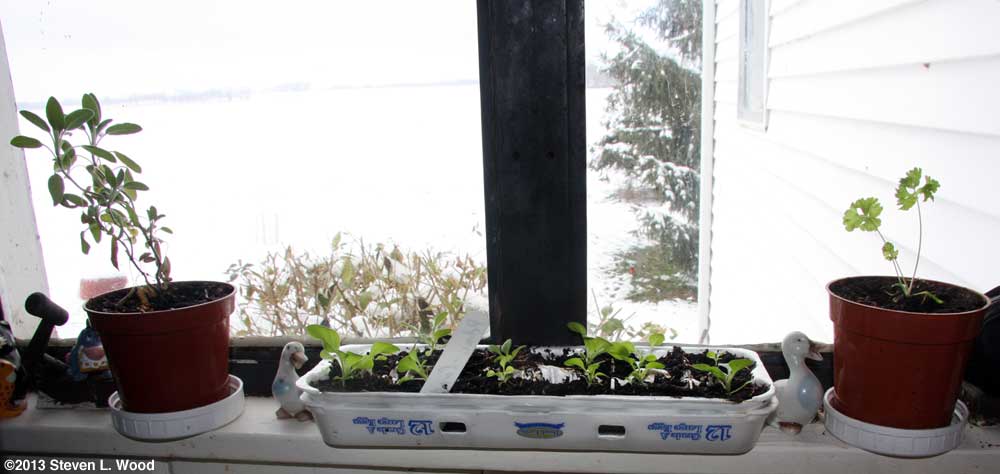



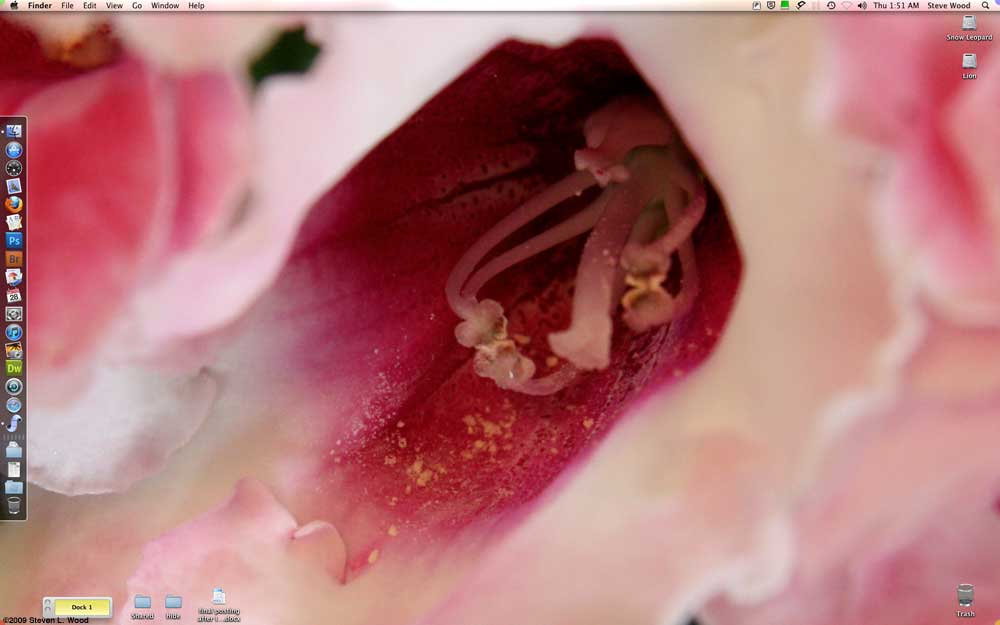

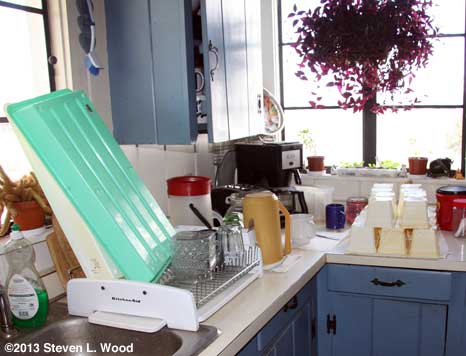







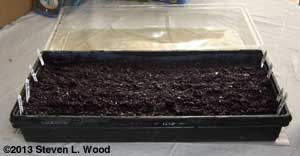


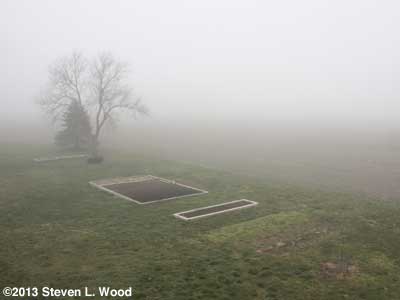







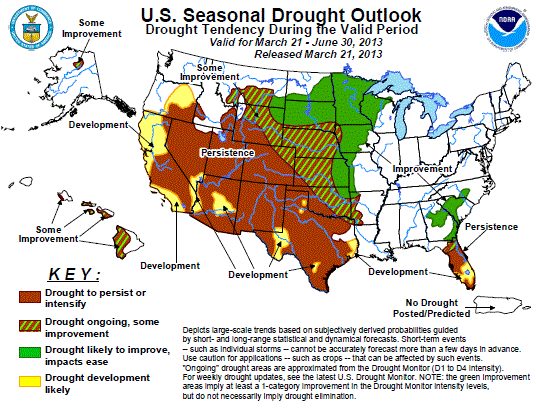
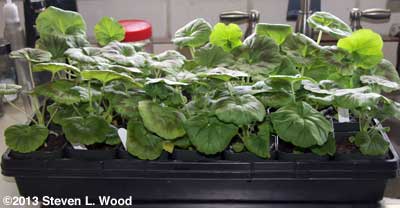

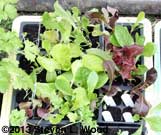
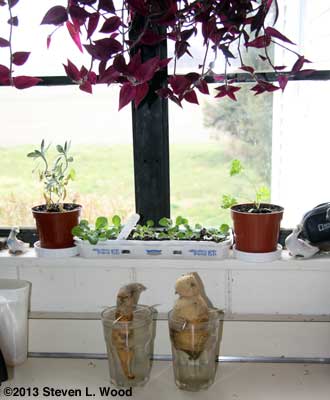
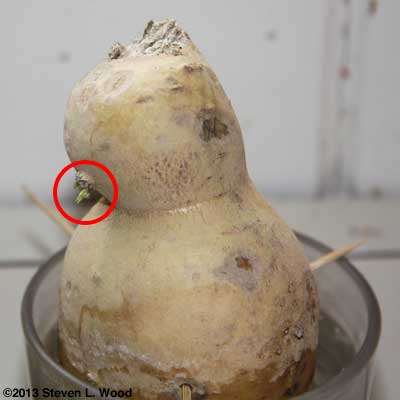
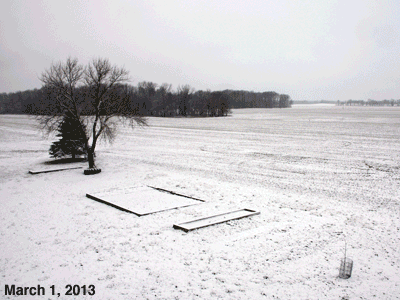 We haven't gotten any asparagus yet this year like we did
We haven't gotten any asparagus yet this year like we did